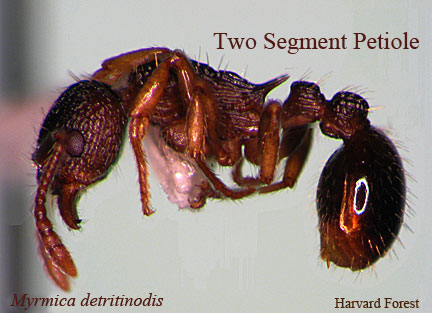You are here
Body Structure
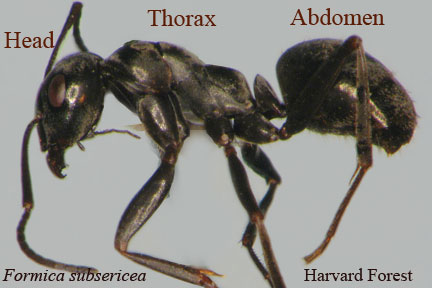
They are exceptionally strong for their size: they can lift 10 times their own weight!
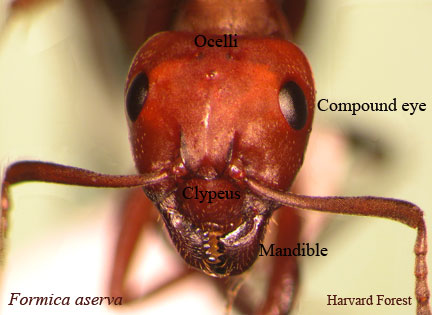
Most ants have two large compound eyes.
They have a set of simple eyes, which consist of many omatidia (eye facets) ocelli, which detect light and shadow.
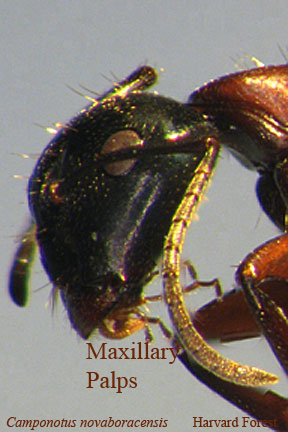
Ants also have two antennae they use to recognize their nest mates and detect enemies.
When ants find food they emit pheromones that provide scent trails so their nest mates can find the food.
Ants also have maxillary palps which detect scents.
Ants use their powerful mandibles to grasp and carry, as well as for cutting and biting.
![[Ant eating tuna]](/sites/default/files/eatingtuna.jpg)
![[Amt biting tuna]](/sites/default/files/bitingtuna.jpg)
The ant's six legs are attached to the thorax.The abdomen contains the ant's vital organs and reproductive parts. This is also called the gaster. Ants in the formicinae subfamily have an acidopore to emit formic acid when threatened.

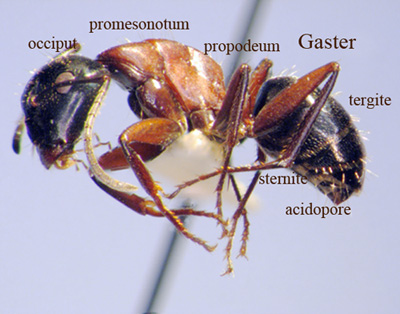
Ants do not breathe like we do. They take in oxygen through tiny holes all over the body called spiracles. They emit carbon dioxide through these same holes. The heart is a long tube that pumps colorless blood from the head throughout the body and then back up to the head again. The nervous system of ants consists of a long nerve cord that also runs from head to rear with branches leading to the parts of the body, kind of like a human spinal cord.
An ant has a petiole connecting the thorax to the abdomen. The petiole can be one or two segments. This feature is used to identify ant subfamilies.

